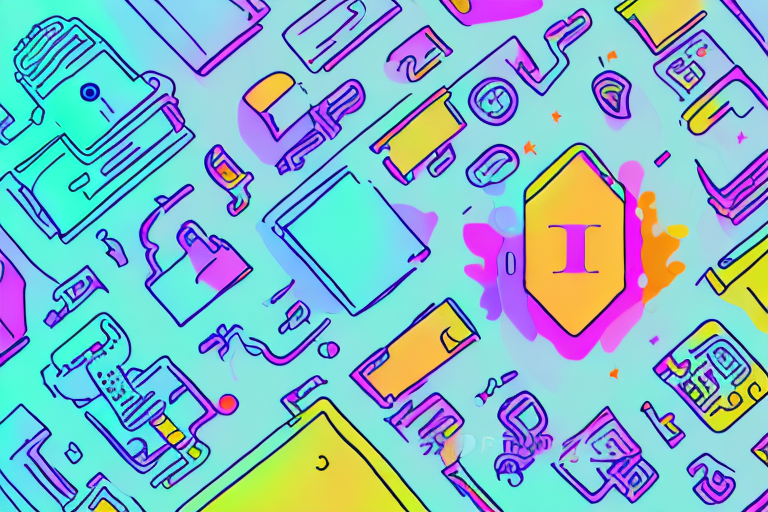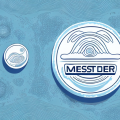Stress and pain are common issues that plague people today. From homework and office work to household chores, we’re constantly overworking our bodies and minds. The result is often muscle tension, stiffness, headaches, and other painful conditions. Fortunately, there are ways to relieve these discomforts without resorting to medication or costly therapy sessions. One such method is through the use of pressure ball trigger points. In this article, we’ll discuss what they are, how they work, and how to use them to alleviate tension and pain in your body.
What are Pressure Ball Trigger Points?
A pressure ball trigger point is a small, often round ball that’s designed to provide an intense and localized massage to specific body areas. They are made of various materials, including rubber, plastic, and foam, and vary in size, firmness, and texture. Pressure balls work by applying firm, sustained pressure to muscles, tendons, and ligaments, which can help release tightness and tension in affected areas.
Pressure ball trigger points are commonly used in self-massage techniques, such as myofascial release and trigger point therapy. They can be used to target specific areas of the body, such as the neck, shoulders, back, and feet, and can be particularly effective in relieving pain and discomfort caused by muscle knots and trigger points. Additionally, pressure balls can be used to improve circulation, increase flexibility, and reduce stress and anxiety.
The Science Behind Pressure Ball Trigger Points
The concept of pressure points has been used in traditional Chinese medicine for thousands of years. These points, which are also known as acupressure points, correspond to different energy channels or meridians in the body. When pressure is applied to these points, it’s believed to stimulate the flow of qi (pronounced “chee”), which helps restore balance and harmony to the body.
The use of pressure balls to target these points is a modern adaptation of this ancient technique. By applying pressure to specific points on the body, you can activate the body’s natural healing processes and promote relaxation and pain relief.
Research has shown that the use of pressure balls can also have a positive effect on mental health. The pressure applied to trigger points can help reduce stress and anxiety by promoting the release of endorphins, which are the body’s natural feel-good chemicals. Additionally, the act of using pressure balls can be a form of mindfulness practice, helping to calm the mind and improve overall well-being.
How Pressure Ball Trigger Points Help in Relieving Stress and Pain
One of the main benefits of using pressure balls is that they can help alleviate stress and pain in the body. When you’re feeling stressed or anxious, your muscles tend to tense up, which can lead to headaches, neck and shoulder pain, and other discomforts. A pressure ball can help release this tension by applying targeted pressure to specific areas of the body. Additionally, they can help improve blood flow and circulation, which can further aid in easing tension and reducing pain.
Moreover, pressure ball trigger points can also help in improving flexibility and range of motion. By using pressure balls regularly, you can loosen up tight muscles and increase your body’s ability to move freely. This can be especially beneficial for athletes or individuals who engage in physical activities that require a lot of movement and flexibility. In addition, pressure balls can also be used as a form of self-massage, which can help reduce muscle soreness and stiffness after a workout or a long day of sitting at a desk.
Different Types of Pressure Balls for Trigger Point Therapy
There are many different types of pressure balls available on the market, each with their own unique properties and benefits. Some of the most common types include:
- Massage balls – These are typically made of dense foam or rubber and have small spikes or bumps that help provide extra stimulation to the muscles.
- Hand therapy balls – These are small, squishy balls that are designed to help alleviate tension and improve grip strength in the hands and fingers.
- Lacrosse balls – These are small, firm balls that are commonly used for deep-tissue massage and trigger point therapy.
- Foot massage balls – These are small, spiky balls that are designed to provide relief to tired and achy feet.
It is important to choose the right type of pressure ball for your specific needs. For example, if you are looking to target specific trigger points in your muscles, a lacrosse ball may be the best option. However, if you are looking for a more gentle massage, a foam or rubber massage ball may be more suitable. It is also important to use the pressure ball correctly, applying enough pressure to provide relief without causing pain or discomfort.
How to Use Pressure Ball Trigger Points for Self-Massage
Using a pressure ball for trigger point therapy is relatively simple. Begin by identifying the muscle or area of the body that’s causing discomfort. Then, place the pressure ball on the affected area and apply firm, sustained pressure for 30-60 seconds. You can also perform small circular motions in the area to help increase blood flow and promote relaxation.
It’s important to avoid placing too much pressure on sensitive or painful areas. Additionally, if you’re experiencing significant pain, it’s recommended that you speak with a healthcare professional before attempting to use a pressure ball to address the issue.
The Benefits of Incorporating Pressure Ball Trigger Points in Your Daily Routine
By incorporating pressure ball trigger points into your daily routine, you can help relieve tension and promote relaxation in your body. Regular use of pressure balls can help improve flexibility, reduce inflammation, and ease chronic pain in affected areas. Additionally, pressure ball therapy can be a cost-effective and convenient alternative to traditional massage therapy techniques.
Tips for Choosing the Right Pressure Ball for Your Needs
When selecting a pressure ball for trigger point therapy, it’s important to consider the size, firmness, and texture of the ball. You may also want to consider the specific area of the body you plan to target with the ball. For example, a larger, firmer ball may be more appropriate for deep-tissue massage, while a smaller, softer ball may be better for hand or foot therapy.
Safety Precautions to Consider When Using Pressure Ball Trigger Points
While pressure ball therapy is generally safe for most people, there are a few important safety precautions to keep in mind. Firstly, if you have any underlying medical conditions or injuries, it’s vital that you speak with a healthcare professional before attempting to use a pressure ball for self-massage. Additionally, be sure to start with light pressure and gradually increase the intensity as your body becomes accustomed to the sensation. Finally, if you experience any significant pain or discomfort during use, stop immediately and seek medical attention if necessary.
Combining Pressure Ball Trigger Points with Other Relaxation Techniques
While pressure ball therapy can be highly effective on its own, it can be even more beneficial when used in combination with other relaxation techniques, such as deep breathing exercises, meditation, and yoga. By taking a holistic approach to relaxation and stress management, you can help your body and mind achieve a greater sense of balance and well-being.
In conclusion, pressure ball trigger points can be an effective and convenient way to relieve stress and pain in your body. By incorporating pressure ball therapy into your daily routine, you can help improve flexibility, reduce inflammation, and ease chronic pain in affected areas. Be sure to choose the right pressure ball for your needs, and always exercise caution and seek medical advice if necessary. With a little patience and practice, you’ll soon be well on your way to a more relaxed and pain-free life.





